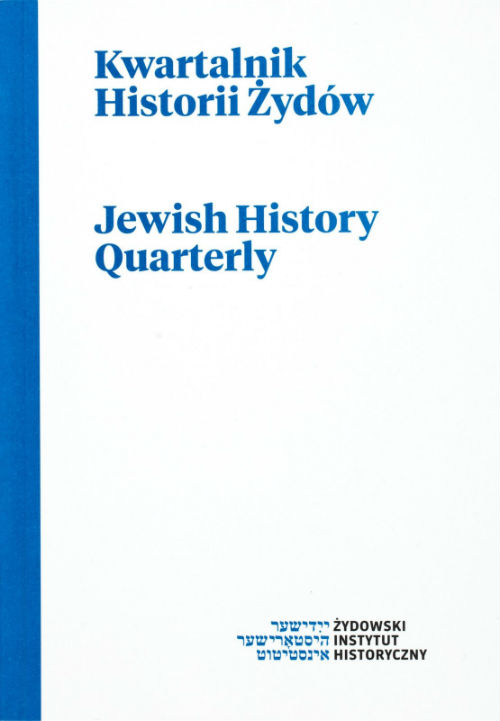Yiddish and Early Hassidic literature
Yiddish and Early Hassidic literature
Author(s): Jan DoktórSubject(s): Cultural history
Published by: Żydowski Instytut Historyczny
Keywords: Hassidism; religious literature; Yiddish language; Jewish printing shops
Summary/Abstract: I ascribe to early Hassidic literature four publications printed in 1780-81 in Korzec: three anthologies of sermons by Jacob Josef of Połonne and an anthology of teachings of Dov Ber of Międzyrzecz. Until 1780, any transmission of Hasidic teachings happened mainly orally. Yet, out of fear that they may be forgotten, or even perverted by the tradents, written records were not always avoided. Committing them in writing was not synonymous with the intention to have them printed. Yet, refraining from print carried a price, inflating as Hasidism transformed itself into a massive movement. The growing demand for texts with Hasidic teachings led to a mass copying of notes initially intended for personal use only. While copied, the notes were completed with personal commentaries and expanded. No one was able to control this avalanche of handwritten texts. The first Hasidic publications were anthologies of sermons delivered during the Sabbath and on holidays. From the testimony of Salomon Majmon, who spent some time at the court of Dov Ber in Międzyrzecz, we know that sermons were said in Yiddish, with Hebrew or Aramaic quotes from holy books inserted. Many students, without or with the preachers’ permission wrote them down from memory on the following day. Often this record was only a paraphrase of teachings heard, suitably completed on the basis of known teachings by other masters. Historians are not unanimous in regard to the language in which these notes were written. Owing to their personal character, Yiddish seems to be the natural language of the records. Nevertheless, they were printed solely in Hebrew, causing some historians to assume, that the editor already used notes in that language. Yet, I am inclined to admit the first possibility, all the more that the editors themselves complained about the difficulties they had with the translation, or they boasted to have translated the notes in their possession. Between 1780 and 1815, no less than 68 Hasidic titles have been printed in 165 editions, all in Hebrew. The fact that the printed sermons were translations from Yiddish was acknowledged by many autors and editors, among others in the introduction to the work of Gedaliah of Ilińce, Teshuot hen by the editor and translator thereof. Similarly wrote in the introduction to Maggid Devarav le-Yaakov Shlomo from Łuck. The process leading from the delivery of sermons, through their transcription, editing and translation to the creation of the final version, has not been well researched yet. In any case, this is a difficult task, as we do not have any notes or handwritten texts which served as basis for the edition. Hence, the main remaining source of information are title pages from the publications and the introductions written by editors. The historians mostly concentrate on the final product of a long and often complex process – the print, the link of which with the teachings and the persons to whom authorship is attributed, is not that obvio
Journal: Kwartalnik Historii Żydów
- Issue Year: 247/2013
- Issue No: 03
- Page Range: 494-510
- Page Count: 17
- Language: English

